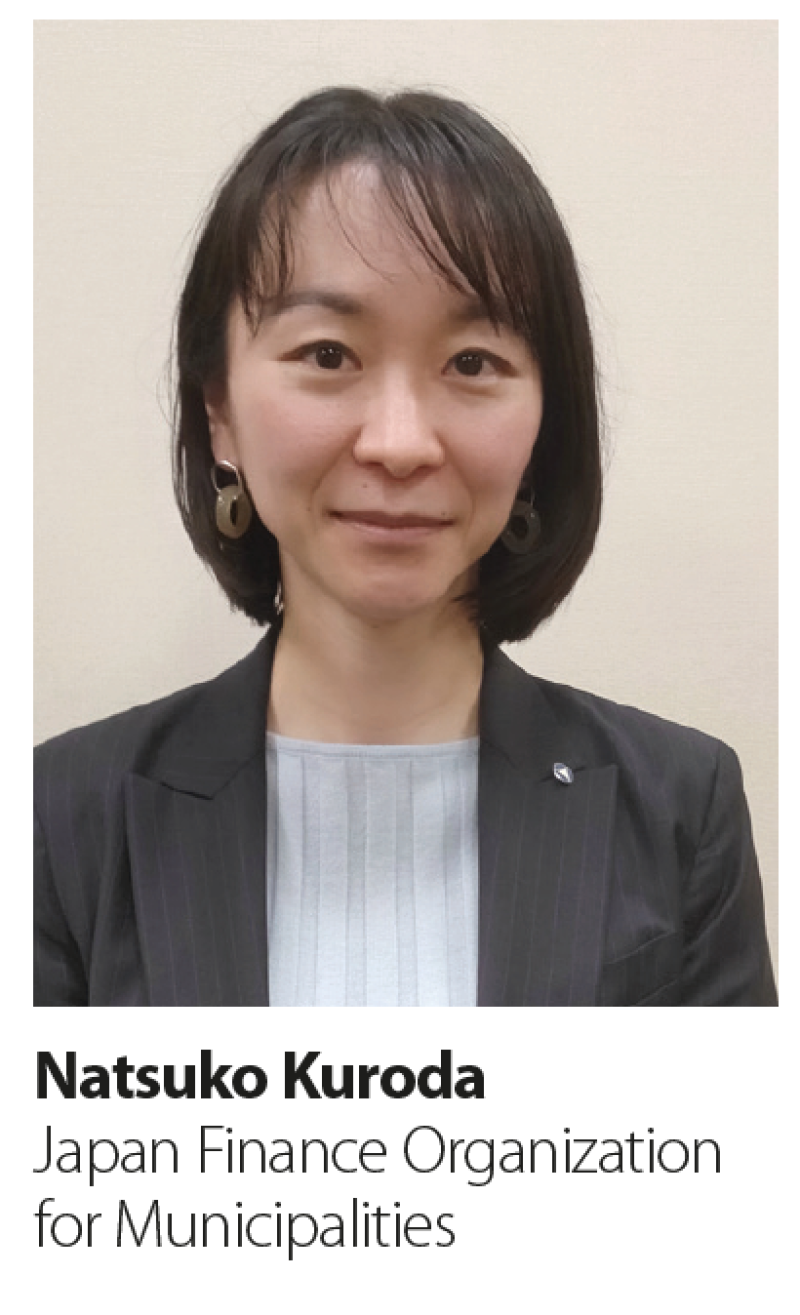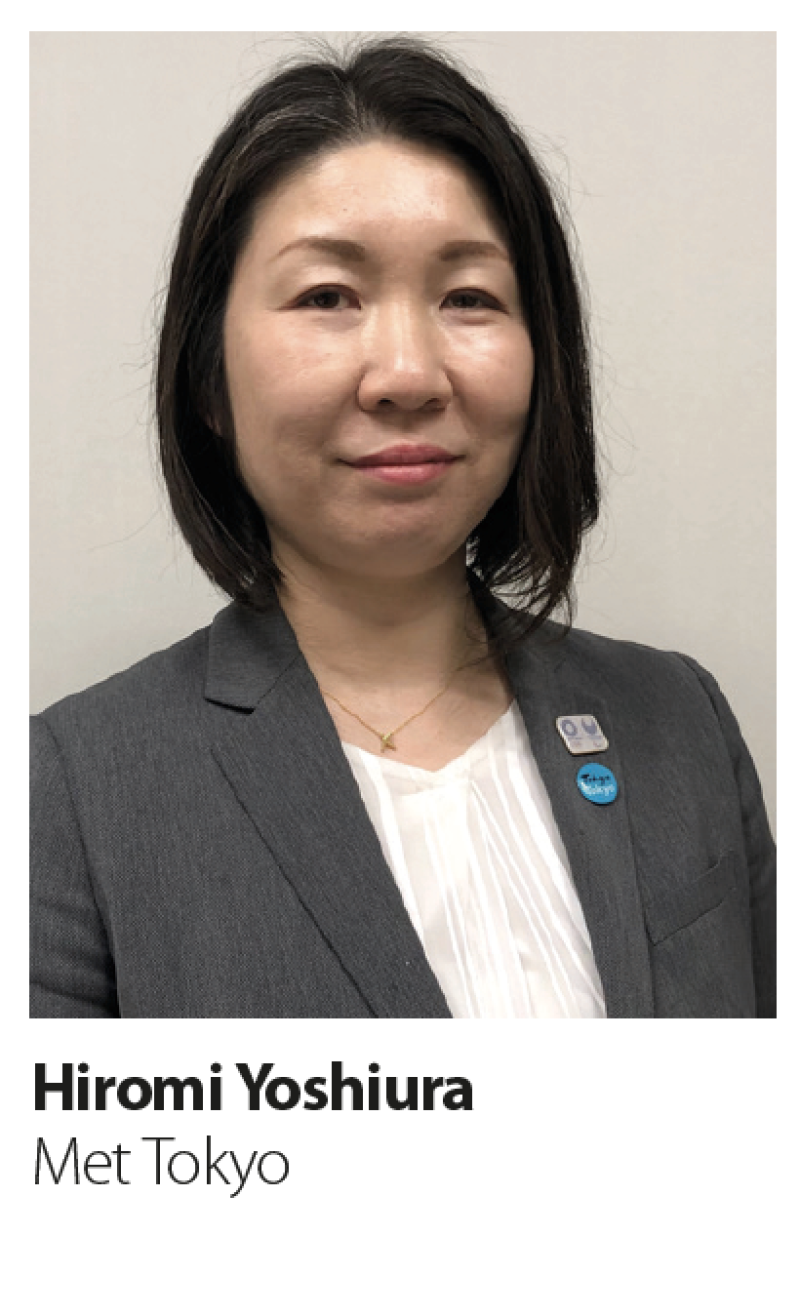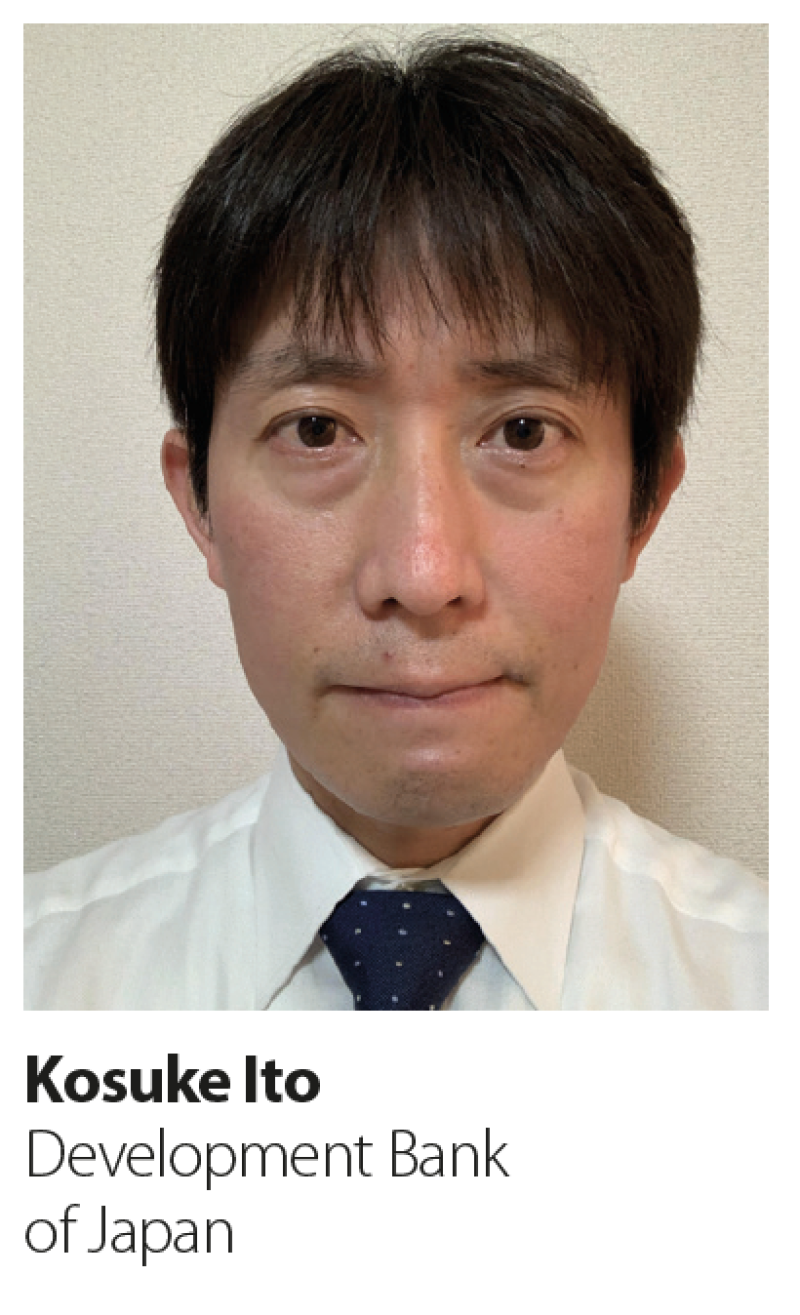Participants in the roundtable were:
Yoshitaka Hidaka, director, capital markets and funding division, treasury department, Japan Bank for International Cooperation (JBIC)
Kosuke Ito, director, treasury department, Development Bank of Japan (DBJ)
Natsuko Kuroda, director of finance, finance department, Japan Finance Organization for Municipalities (JFM)
Hajime Taniguchi, director, capital markets division, Japan International Cooperation Agency (JICA)
Hiromi Yoshiura, director, bond section, budget division, bureau of finance, Met Tokyo
Masanori Kazama, head of international DCM,
Nomura
Moderator: Matthew Thomas, GlobalCapital
GlobalCapital: How did you adjust your funding plans — and your business strategy — in response to the pandemic?

How did we fund ourselves in the meantime? We just tried to tide ourselves over by using short-term bond issues. We used the dollar-yen swap to fund ourselves with short-dated dollars. That was a reasonable solution for the short term, but since our assets are long term we wanted to issue a long-term bond. Our plan for the February issuance was a 10 year bond but we changed that to three to five year maturities because of the sharp rise in market volatility. That is one example of how we changed our funding strategy.
In terms of our business strategy, we consulted with the Japanese government to figure out the sectors that most needed our support. Since we are a governmental financial institution, one of our roles is to supply finance to areas identified by the government. We got a supplementary budget for lending related to Covid and introduced a new emergency lending programme in April 2020. In that way, we put a framework in place to supply adequate resources to Japanese firms that were hit hard by the pandemic.
Hajime Taniguchi, JICA: We had a similar situation. We were planning a global foreign currency bond issue in May but, because the market was so volatile, we decided to see how the market evolved over time. Between April and June, we monitored the market closely, waiting for the right time to issue. In July, we were able to come to the market for the first time in 2020, selling a $500m government-guaranteed bond.
In terms of the impact on our business strategy, it became important for us to try to mitigate the negative impact of pandemic on developing countries as much as possible. We introduced a new programme of Covid-19 response loans, rolling it out in 14 countries. We lent about ¥400bn ($3.66bn) to these countries to help them establish healthcare systems and put in place measures to tackle the pandemic. The loans also went to work to address other important areas, including education and gender discrimination, all designed to create more equitable societies.
Natsuko Kuroda, JFM: The most obvious impact on our funding strategy was the fact that we increased our funding plan by ¥500bn in 2020. That was split between an increase of ¥300bn and another ¥200bn in December. This money was needed by our borrowers. We offer financing to Japan’s local municipalities, many of which had great difficulty as a result of Covid‑19.
Normally, we issue a deal in April every year and that is usually around $1bn. But in 2020, the volatility of the market was quite high, so we waited until May — and increased the size of the deal to $1.5bn. Our other USD offshore bonds in 2020 were also increased to the same size, while around $800m was raised through private placements. We also issued green bonds for the first time. So, there have been pretty dramatic changes to our funding strategy, both in terms of the overall amount raised and the choice of markets and structures to meet our funding target.
Hiromi Yoshiura, Met Tokyo: In order to deal with the Covid-19 pandemic swiftly and appropriately, we have taken measures with spending totalling more than ¥2tr in the past year, and have utilised bond issuance along with our reserve funds as our financial resources. In addition, we have also issued bonds to cover the decrease in tax revenue. The total issuance amount of our publicly offered bonds in FY2020 is expected to increase from the initial plan of about ¥500bn to about ¥760bn.
Kosuke Ito, DBJ: The pandemic affected DBJ’s business strategy to a great extent. DBJ has worked with the Japanese government to implement two different types of programme to help corporations endure the pandemic. First, we had a ¥22tr budget in FY2020 for Crisis Response Operations to provide loans to companies hit by the pandemic. That was split between ¥15tr to medium-to-large enterprises and ¥7tr to small corporations. Second, we have also implemented the Special Investment Operations to provide so-called “risk capital” in the form of subordinated type loans and equity investments. We had a ¥400bn budget for the programme; half of the budget is provided by the government. As a result, the budget size for our loans and investments increased significantly in FY2020.
On the other hand, our bond issuance plan was not so affected by the pandemic, mainly because the majority of that increased budget was provided by the government, either in the form of loans or equity contribution, except our GG international bond budget increased by around ¥100bn, from ¥200bn to ¥300bn.
Having said that, we were affected by the pandemic in certain ways. We had to postpone our GBP international bond issuance for about three weeks. In addition, in terms of our April domestic bond issuance, one thing we became aware of was that during that pandemic investors were forced to work remotely or from home for the first time, and a certain number of Japanese investors suspended or reduced the size of their investment activities as a result. That made it harder to increase the size of our issuance as originally expected, although we successfully managed to issue the bonds with our initial target size of ¥200bn for each. Other than these, we have had no problem executing our original fundraising plan thanks to massive support from central banks and governments globally, which has provided stability to the market.
Masanori Kazama, Nomura: It is worth pointing out that Japan’s bond market actually endured the crisis relatively well. In 2020, obviously the market was impacted by the Covid-19 pandemic. The new issue market was shut in mid-March and rates fell to historical lows. However, the government and the central bank were fast in making a decision to save the market. After the monetary easing policy was put in place, the new issue market stabilised — and it actually became a good year for many issuers.
GlobalCapital: One theme that emerged from the crisis was ‘coronavirus bonds’, also known as ‘Covid-19 response bonds’. Although there has been some issuance of this product in Japan, international Covid bond issuance never took off with the country’s leading SSA issuers. Did you consider Covid bond issuance? What were the main factors that discouraged you from going ahead with a Covid‑specific deal?

Another reason is that since our lending target is local governments, it is not always easy to carve out a specific use of proceeds that gives a bond a clear ‘Covid response’ use of proceeds. Because of this, we did not issue a Covid bond in 2020, but if you see these deals are part of the wider social bond market universe — and a lot of people take that view — then it’s certainly a market we are going to explore. There is a clear social component when you are providing financing to local governments.
Kosuke Ito, DBJ: As I mentioned earlier, DBJ has implemented two special operations alongside the Japanese government in order to counter Covid-19. But DBJ has also implemented our own loan programme to support companies adversely affected by the pandemic but do not meet the requirements for these government sponsored special operations. We issued two sustainability bonds in FY2020, and about 25% of the eligible assets of these bonds was related to our loans under our own Covid‑19 loan programme. In that sense, you could argue that our bonds effectively were Covid response bonds, although we didn’t publicise them as such. Because there are no clear definitions or guidance about this point, we were not certain whether or not 25% was sufficient to label our bonds as a Covid response bonds.
Yoshitaka Hidaka, JBIC: We studied the possibility of issuing a Covid-19 bond closely. We established an emergency lending window to help Japanese companies get relief from Covid-19, so there did seem to be a clear use of proceeds. We also recognised there would likely be good demand for such a deal. But the main objective for us is to issue bonds swiftly and at a tight price.
Would we get an advantage from issuing a Covid response bond? Or would the additional reporting requirements just slow us down without providing a pricing benefit? These questions discouraged us from selling an explicit Covid response bond, but I agree that thematic bonds are on the rise and this is something we should all be looking at closely.
Hiromi Yoshiura, Met Tokyo: In December 2020, we issued domestic bonds for which the use of proceeds was limited to Covid-19 countermeasure-related projects. In issuing this bond, we chose the non-labelled format, which does not involve the set-up of a framework or external review, to achieve speedy execution. We are now planning to issue domestic social bonds with a formal label in FY2021 through utilising the knowledge gained in 2020.

I don’t know exactly whether we will issue another Covid-19 response bond, but certainly bonds that have clear social benefits will become a more important part of our funding plan. The form might be different but the concept is largely the same. This is a market that I think will become more established in the future and there’s a lot of room for JICA to issue these deals and bring attention to different social themes.
It is a little more difficult in the international market because when we borrow in US dollars, we are using that money to directly lend in dollars and it is not always easy to put a specific social theme on these projects because of their wide variety. We do pick specific projects for our thematics bonds in Japanese yen. I think there would definitely be demand for such an issue if we decided to sell an international Covid response bond, but it is a bit more challenging.
GlobalCapital: How has the marketing of your bonds been affected by travel restrictions this year? Do you think the remote approach to bookbuilding (using Zoom, Webex, or other platforms) will become a lasting part of your bond marketing strategy in the future?

Natsuko Kuroda, JFM: I agree with that entirely. We hardly had any in-person meetings during 2020; it was either phone calls or online video calls. We were a bit concerned about that at first but the end result was fine. When we are talking to investors quite distant from Japan — for example, green bond investors in the Nordic countries — it is really helpful to be able to talk online. You can cover a large spectrum of investors and you don’t have to worry about travel schedules. I think we will still need to do some in-person meetings, but this form of IR is definitely here to stay.
Kosuke Ito, DBJ: I think remote meetings are a very efficient mode of communication, especially because we can cover a wide range of investors in various regions even in the same day in a very efficient manner. For instance, we can have a meeting with a US investor, immediately followed by a meeting with a European investor, without any constraint caused by distance and travel time. This type of IR was not possible for us in the case of an in-person meeting only environment. In this aspect, I agree with the other panellists that this type of communication will stay in the future.
But at the same time, as has already been mentioned, in-person meetings still have a lot of value. Human beings inherently like to see each other, so in-person meeting would also be important for some occasions: for example, for a first time meeting. Perhaps we can have an in-person meeting, say, once every three years. So I think the question is not so much whether remote meetings replace in-person meetings, but rather what sort of balance between the two is the best.
One thing to note is that this remote form of IR has combined quite well with the working from home environment, which also emerged even in Japan thanks to the pandemic. Since IR meetings with international investors are often very early or very late in Japan, particularly in the case of meetings with investors in the US, it is easy for us to go into our home office and do a meeting without a drastic impact on our lifestyle. This is another positive finding for us during the pandemic.
Yoshitaka Hidaka, JBIC: We were a bit concerned about remote IR once the pandemic spread, but investors have adjusted very well to it. I guess we conducted more than 100 IR meetings in 2020, so in terms of the efficiency this is clearly a step forward. It is a bit harder when you are meeting investors for the first time — they want to see you in person. We got over this slightly by adding photos to our presentations, although sometimes when they are staring closely at your presentation you do start to wonder what they are looking at!
I agree with the other speakers that in the future the best approach will be to combine both remote IR and in-person meetings.

Masanori Kazama, Nomura: We saw a slightly difficult dynamic in Japan when it came to remote meetings. Since a lot of Japanese investors have a more collective form of decision-making, when everyone on an investment committee needs to attend a meeting, in the past it would sometimes be difficult to get a decision. It is now easier for investment committees to all join a meeting because it is only a video call.
When it comes to foreign investors, remote IR meetings have definitely been helpful and I absolutely agree that it’s going to lead to changes in the way we do things in the future. I don’t have anything to say on that point that the other speakers haven’t already said. The one point of concern I have is making sure that we are still keeping the focus on the most important investors. There can be a temptation when doing remote meetings to cast a very wide net, but we really want to keep the focus on those who are likely to buy a deal. That doesn’t mean ignoring small investors — smaller funds can be really important — but it does mean exercising a bit of caution with names you’re not so familiar with.
GlobalCapital: The global financial crisis established a ‘new normal’ in abundant liquidity and near-zero interest rates. The global pandemic brought the market back to those same low rates — or even lower. How has the ultra-low interest rate environment affected your funding plan? Are you anticipating spread pressure — and what’s your strategy going to be to deal with that?
Hajime Taniguchi, JICA: US interest rates have steepened recently, and SSA spreads have tightened in line with that. So in our case, when we fund in US dollars and swap to Japanese yen, we are getting a very attractive cost of funding. I hope that environment will continue — but when we think about the future of interest rates and spreads, there are so many factors to take into account. It is a very complex question.
Natsuko Kuroda, JFM: We sold US dollar bonds in May and September last year; there was a clear tightening of spreads between those two deals, which we were very grateful for. If we see spreads widening in future — which is certainly a possibility — it’s still a bit of an open question how we respond, since our main funding currency is Japanese yen so we are looking at our foreign currency funding on an after-swap basis. That means rises in spreads might be compensated for by changes in the basis swap.

For some investors seeking yield, our long-term bonds provide better investment opportunities compared with 10 year JGBs, which have been near zero for a long time. In such an environment, the demand for our bonds is not necessarily going to be impacted by how low coupons are.
On the other hand, my impression is that international investors are more sensitive to pricing than those in Japan, but we are still seeing good demand from them for our international bonds. I think this is because, compared with 6As or established international SSA names, spreads for Japanese credits are favourable to investors who are comfortable to take Japan’s credit risk in order to enjoy, from their perspective, better returns on a relative value basis.
Hiromi Yoshiura, Met Tokyo: The issue amount of our foreign bonds is determined by comprehensive consideration of the balance with domestic bonds, as well as trends in the swap market. The issue amount is not necessarily linked to the interest rate level but, in general terms, we can say that this is a favourable issuing environment as issuing costs are declining. We recognise that spreads have considerably tightened on the back of the solid demand toward Japanese names, which provide relatively attractive yields amid the decline of interest rates.
Yoshitaka Hidaka, JBIC: In this extremely low interest rate environment, because of the quantitative easing of the US Federal Reserve and other central banks, there is this increased appetite from investors and credit spreads have tightened as a result. Clearly, this is something we are enjoying greatly but this is not a normal situation — in fact, I think it is an aberration and will not last for very long. The most important thing for issuers is for the market to be stable. We have large funding needs, so a predictable market environment is the key thing for us. GC

